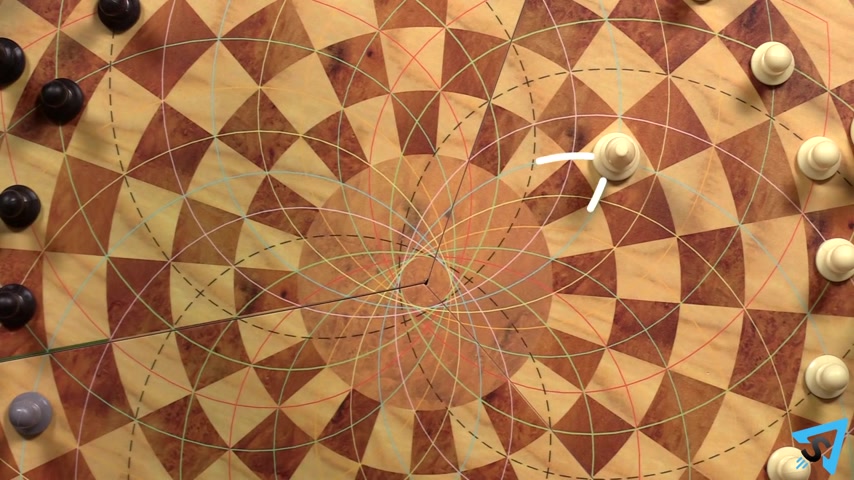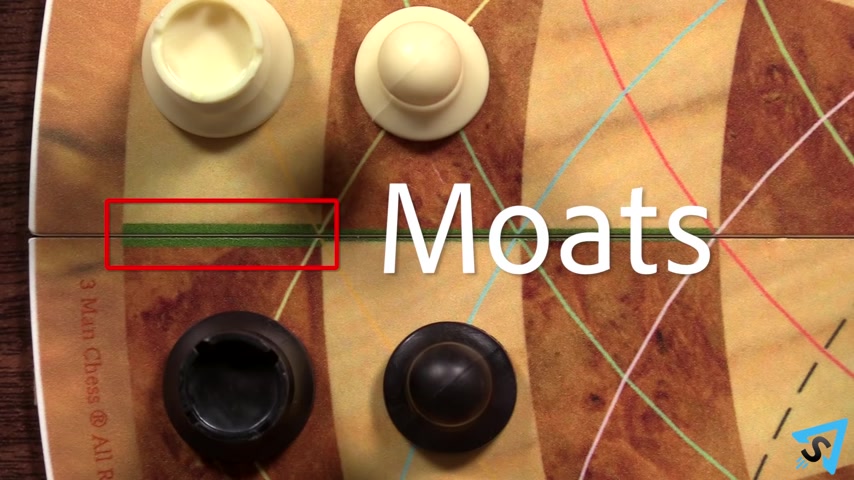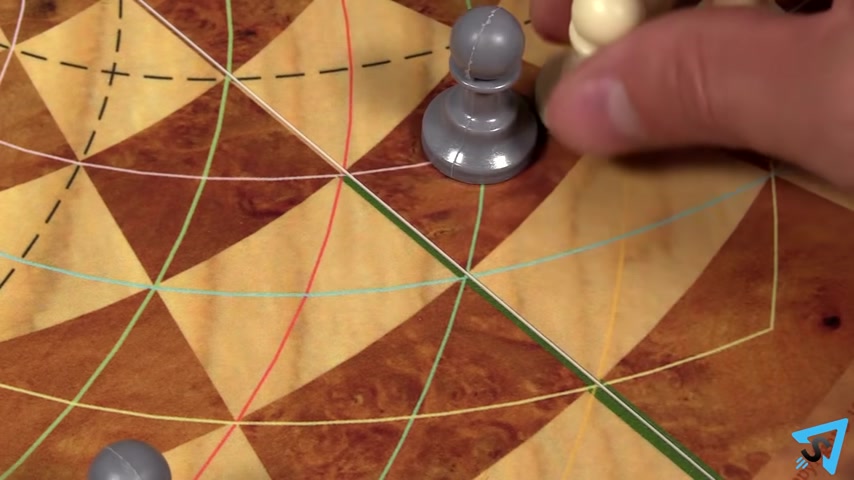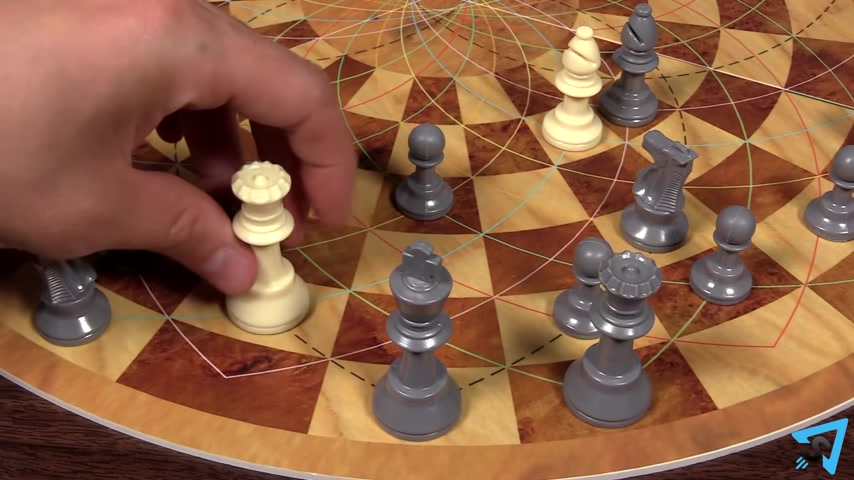https://www.youtube.com/watch?v=_LwSsqFrlvQ
How to play 3 Man Chess

Three man chess , how to play .
The rules are the same as regular chess except for these changes .
For a refresher of those rules check out this video .
The object of the game is to checkmate both opponents .
Kings set up the pieces along the two outside rows of the board with each player's pieces set up in between the green lines , ensure that all the kings are placed on the white spaces , white goes first , then play proceeds clockwise with gray , then black , the center of the board may only be passed through .
It is not a space that can be occupied pieces may move straight through the center to the other side .
The adjoining vertical squares through the center , maintain the same color .
The knight will also retain the same color .

If it moves through the center to move a piece diagonally through the center .
Follow the trajectory lines out from the square to the other side , you can capture pieces on the other side of the center or move through it following the line .
When a piece follows a diagonal traject line to the outer row of the board , that piece may not turn the corner and continue moving in one consecutive move .
It must wait until the next turn before it can continue .
The trajectory pieces may move vertical across spaces and through the center or horizontally around the board on the same row .
When moving a knight through the center , do not follow the trajectory lines .
Whenever you move a night , the knight must move two squares vertically , then one square horizontally or one square vertically , then two squares horizontally .

This process of movement is necessary to maintain when dealing with moats .
The thick green lines that border each team on the outer row are called moats .
No piece can check an opponent's king through a moat .
No matter what , no piece may travel across a moat horizontally or diagonally unless the moat is bridged .
A piece may momentarily bridge a moat .
If its move across the moat doesn't result in the capture of a piece or puts an opponent's king in check .
But if a player is eliminated , then both of its moats are permanently bridged for all pieces .
Also , once an active player vacates their outer row of all of their pieces .
Even if they bring them back later , then their moats are also permanently bridged .

If either configuration of a knight's move would carry it horizontally across a moat without that knight being able to bridge the moat , then that move is illegal and may not be done .
The thinner green lines above the moats that run for two spaces are called creeks , ponds may not capture across a creek on their own side of the board .
They must advance to the space beyond the end of the creek first on the fourth row from the outside before they can capture in that direction .
Once a pond crosses the center , it no longer observes creeks .
A team's checkmate status is not finalized until it is their turn unless their king is captured .
If a king's position is so unfortunate , whereas the next team's move creates a check by the following team , then that following team may capture that king .
If they wish .

If they do , they are then considered checkmated .
When a player is checkmated , that player is eliminated from the game , but all their pieces remain on the board .
These pieces do not move , they cannot check a king and you may not pass a piece through them .
If you wish to occupy a space with an eliminated player's piece on it , then you must capture that piece .
If a player cannot make a legal move called a stalemate and three players are still in , then that player is considered checkmated and eliminated from the game .
If there are only two players during a stalemate , then the game is a draw .
Otherwise the game continues until only one player remains , then that player is the winner .
Also , if you checkmate both opponents simultaneously , then you win
Are you looking for a way to reach a wider audience and get more views on your videos?
Our innovative video to text transcribing service can help you do just that.
We provide accurate transcriptions of your videos along with visual content that will help you attract new viewers and keep them engaged. Plus, our data analytics and ad campaign tools can help you monetize your content and maximize your revenue.
Let's partner up and take your video content to the next level!
Contact us today to learn more.